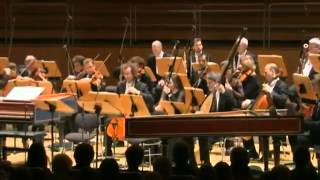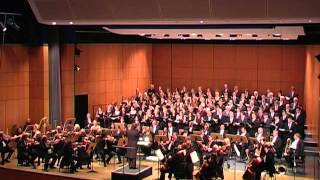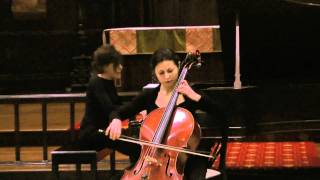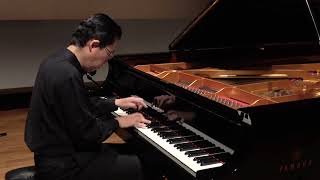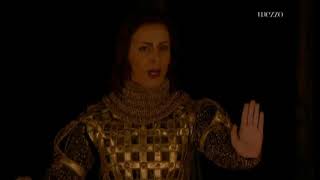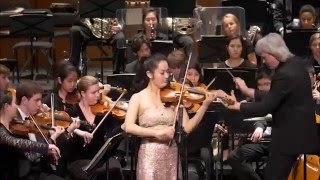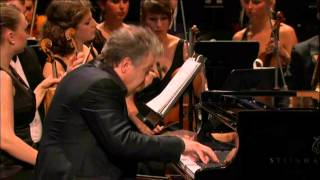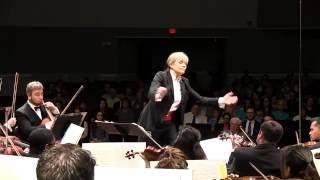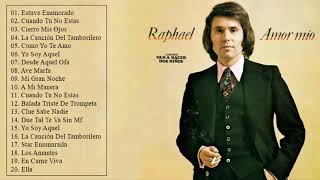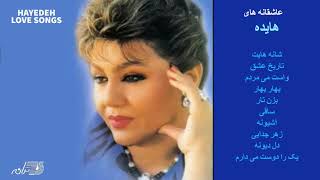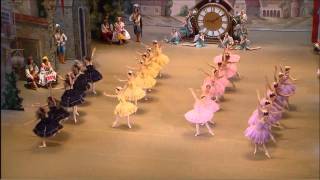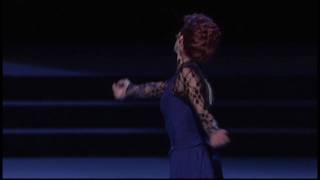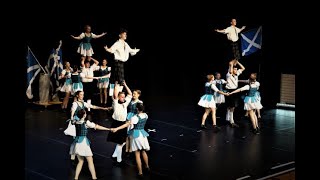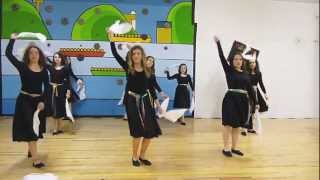LGTBI+ Pride Day is celebrated on June 28
Recommended music videos for initiation to classical music
Jean-Baptiste Lully (1632-1687) was a French composer of Italian origin (he was born in Florence ) and naturalized French at the age of 21 (his real name was Giovanni Battista Lulli ). He soon stood out as a violinist and dancer and at the age of twenty he joined the service of Louis XIV as musical director of the royal family; From then on, its importance in the development of classical ballet has been paramount. He also renewed the essence of the opera with greater solemnity in its staging, a decisive impact on the clarity of the text and careful elaboration in its ballets and choruses. His musical production is fundamentally based on three pillars: opera, ballets and religious music.
Le Bourgeois Gentilhomme ( The Bourgeois Gentleman ) is a comedy-ballet by Molière in five acts with music by Jean-Baptiste Lully ; It was premiered by Molière 's company on October 14, 1670 at the court of Louis XIV at the Château de Chambord .
Today we offer the March for the Ceremony of the Turks performed by the Frankfurt Radio Symphony under the baton of the master harpsichordist and conductor specializing in baroque music, Emmanuelle Haïm , who has had relevant performances at the head of the Berlin Philharmonic, from the Chicago Opera or the BBC Proms , among other groups.
Franz Schubert (1797-1828) was an Austrian composer who at the age of 11 was admitted as a member of the choir of the Imperial Chapel in Vienna where he had Salieri as a teacher. At that time, what brought in money was theater and opera, a genre in which he never managed to excel; So he turned to lieder (songs), among which his Ave Maria stands out. and the lieder ensemble La Bella Molinera . Despite dying at the age of 31, he left more than 1,500 works written, including numerous piano and chamber music pieces, 8 symphonies, concert works, incidental music, sacred music (among others, 7 Masses, 1 Oratorio and 1 Requiem). , several singspiel (small operettas), some opera and more than 600 small vocal works, mainly the lieder mentioned.
Rosamund , from 1823, is a work by the composer Franz Schubert , which deals with the stage music for the homonymous play by the writer Helmina von Chézy , which was only performed for two days. The failure of the public led to the suspension of the other functions. Schubert 's score was missing, but was found in 1861. The libretto was not recovered, so the details of the plot are unknown.
Hier auf den Fluren mit rosigen Wangen is the Shepherds' Chorus from Schubert 's Rosamund, Princess of Cyprus whose text begins by saying “Here in the rosy-cheeked fields, shepherdesses, hasten to dance…” written for four mixed voices. Today we offer it in a version by the Choir of the Professional Music School of the Upper Palatinate District in Sulzbach-Rosenberg and the Bohemian Symphony Orchestra in Prague under the direction of maestro Dieter Müller.
Piotr Chaikovsky (1840-1893) was a Russian composer who graduated from the Saint Petersburg Conservatory and wrote works of different genres, although where he achieved the greatest success was with his ballets. In 1859 he obtained a civil servant position in the Ministry of Justice , which he would abandon after three years to be able to dedicate himself only to music. His personal life was plagued by continuous crises since the death of his mother and his repressed homosexuality, which forced him to enter into a marriage that only lasted a few months. He wrote more than 150 compositions, including works for piano, quartets, suites, symphonies, concertos, choirs, cantatas, operas and ballets. He died at the age of 53 and is considered one of the greatest composers in history.
Catalog of Tchaikovsky's works . His works are classified by their Opus number ( from the Latin opus 'work'; op. abbreviation) which is a term used in music to catalog the works of most composers since the 17th century .
The Nocturno is a piece of vocal or instrumental music, with a sweet melody and free structure. The name "nocturne" was given, in the first instance in the 18th century , to a piece played at times, generally at night parties and then put aside. In its most common form (that is, as a single-movement piece usually written for solo piano), the genre was cultivated mainly in the 19th century . The first nocturnes written under that name were composed by John Field , seen as the father of the romantic nocturne , which has a characteristic cantabile melody with an arpeggiated accompaniment. However, the most famous exponent of this music was Frédéric Chopin , who wrote 21 works of that genre.
Today we offer Tchaikovsky 's Nocturne Op.19 No.4 written for cello and piano performed by the Ukrainian cellist Daria Janssen accompanied by the Spanish pianist Raquel Gorgojo
Francis Poulenc (1899 - 1963) was a French composer, a member of Les Six , a group composed of Milhaud, Auric, Durey, Honegger, Tailleferre (the only woman in the group) and Poulenc himself. He embraced the techniques of the Dadaist movement (anti-artistic, anti-literary and anti-poetic which questions the existence of art, literature and poetry). The critic Claude Rostand describes Poulenc as "half heretic, half monk", a label that was attached to his name for the rest of his career, while Poulenc says: "my work is the juxtaposition of the profane with the sacred." Some critics consider him the first openly gay composer in history. He composed music in all major genres, including chamber music, oratorio, opera, ballet music, and orchestral music.
Trois novelettes (Three novelettes) are three short piano pieces composed by Francis Poulenc . The first two, FP 47, were written in 1927 and 1928; the third, FP 173, in 1959. I (0:01) Novelette in C major is dedicated to Virginie Liénard , a family friend. The piece features a neoclassical song-like melody interrupted by a contrasting central section.-. II (2:40) Novelette in B flat minor is similar in many ways to a scherzo ; It is dedicated to the composer's friend and critic, Louis Laloy.- . III (4:29) Novelette in E minor is based on the theme written in 7/8 by Manuel de Falla from El amor brujo (1916), simplified by Poulenc in 3/8 time and without contrasting section; This piece is dedicated to his close friend R. Douglas Gibson .
Recommended classical music videos
Georg Friedrich Handel, HWV 7 (1685-1759) was born in Halle , Germany; Naturalized English, he is one of the leading figures in the History of Music and, of course, of the Baroque . Of his abundant musical production, we must highlight the Oratorio El Mesías , one of the masterpieces of History . As a child he began taking harmony and counterpoint classes from Friedrich Zachow , organist from Halle , with whom he also learned to play the oboe, violin and organ. At the age of 18 he moved to Hamburg where he wrote his first two operas. After three years he traveled to Florence and then to Rome . In 1710 he returned to Germany and from there to London where he settled for life. Despite the total silence with which he protected his privacy, his homosexuality seems clear. He died at the age of 74 at his home.
The catalog of the works of Georg Friedrich Händel , which is known by the acronym HWV and means Handel Werke Verzeichnis (in German, Catalog of Handel's Works) is not ordered chronologically but thematically, by type of genre work and according to its vocal nature. or instrumental. It covers 612 works plus 25 supplements and doubtful and lost works, being prepared between 1978 and 1986 in three volumes. The exact number of compositions is therefore difficult to specify. Its author is the musicologist Bernd Baselt .
Rinaldo is an opera in three acts with music by Georg Friedrich Hände l and an Italian libretto by Giacomo Rossi. This is the first opera that Handel composed specifically for the London stage. The work narrates the love between the Christian warrior Rinaldo and Almirena . The sorceress Armida keeps Rinaldo in her power, going from hating the crusaders to loving one of them. It is based on the epic poem Jerusalem Liberated by Torquato Tasso . Rinaldo contains some of the composer's most famous arias, such as Lascia ch'io pianga (1:26:48), although like Handel 's other serious operas, it fell into oblivion for two hundred years. In the early 1970s it was revived regularly and has become part of the regular operatic repertoire.
The opera is structured in three acts: I (0:11´´); II (1:10:53); III (1:57:27). Today we attend its performance by the Czech master Václav Luks , a specialist in baroque music.
Camille Saint–Saëns (1835-1921) was a French pianist, organist, composer and military man, committed to French musical renewal, as well as teaching; Students such as Fauré and Messager passed through its classrooms. He was a precocious child who, at age 11, made his first public appearance with works by Handel , Mozart and Beethoven . At the age of thirteen he enrolled in organ and composition at the Paris Conservatory and at eighteen, he composed his first symphony. He was a multifaceted intellectual: musician, writer, mathematician, philosopher, archaeologist, geologist, botanist... Just as multifaceted as with his numerous musical works (more than 400) with which he addressed all types of genres among which we must highlight the novelty that At that time it meant film music .
Catalog of the works of Saint–Saëns . His works, like those of Tchaikovsky that we have referred to above, are classified by their Opus number.
Havanaise (Habanera) , Op. 83, as its name indicates, was born in Havana , and according to Pedrell , “its rhythm reminds us of Cuban dance, from which it could well have been born with the influence of the ancient tango of Spain and Cuba » . Already from the 18th century in Spain, musical genres "coming from America ", from Havana , such as the chaconne, the contradanza or the zarabande , were known. Thus, many contradanzas slow down and lose elements that were their own, acquiring others that already sound like what we know as habanera . Today we present Saint-Saëns ' Habanera (written in 1887 for violin and orchestra) with Korean violinist Kim YuEun as soloist, accompanied by the USC Thornton Symphony Orchestra conducted by American maestro Carl St. Clair .
Maurice Ravel (1875-1937), born in Ziburu/Ciboure (Basque Country in France), inherited his meticulous work from his father, an engineer of Swiss origin, and his passion for music from his mother, born in Mendata (Bizkaia). with the folk songs with which he adorned his childhood. A few months after he was born, the family moved to Paris , where at the age of six he began his piano studies. At the age of 14 he entered the Paris Conservatory where he had the opportunity to study with Gabriel Fauré . In 1901 he premiered his Jeux d'eau , a piano work with which he began to make his way in the musical circles of Paris where the influence of Ravel on Debussy and vice versa was discussed. In 1921 he lived until his death in a mansion near Paris , where eminent musicians and intellectuals met.
The Piano Concerto in G major by Maurice Ravel was composed between 1929 and 1931, with a three-movement structure; Ravel said that with this work he did not seek to be profound but to entertain, in the manner of Mozart and Saint-Saëns and among his influences are jazz and Basque popular music . The first performance was given in Paris in 1932 by the pianist Marguerite Long , with the Orchester Lamoureux conducted by the composer. Within months, the work was heard in major cities in Europe and the United States and has been recorded countless times by pianists, orchestras and conductors around the world.
Structure I (0´02´´) ALLEGRADO. The first movement opens with a single sharp whip crack, followed by an exposition containing five distinct themes. Orenstein says of them that the first suggests a popular Basque melody, the second the influence of Spain and the other three derive from the language of jazz . The development section, "a lively game", is followed by a cadence-like passage leading to the recapitulation .-. II. (8´10´´) ADAGIO ASSAI. Unlike the preceding movement, it is a calm theme of Mozartian serenity written in ternary form (ABA). Ravel said about it: "That fluid phrase! How I worked measure by measure! It almost killed me!" The first theme is presented by the piano, without accompaniment. Ravel said that he took as his model the Larghetto theme from Mozart 's Clarinet Quintet . The second theme is presented by the woodwinds to, after a few episodes, return to the first theme through the beginning of the English horn under the "delicate filigree in the high register" of the piano.-. III (16'58'') PRESTO. It is by far the shortest of the three movements. Four energetic chords at the beginning launch what Fleury describes as "an unstoppable attack, spurred by the screeches of the clarinet and piccolo, the donkey braying of the trombone, and occasional fanfares that blossom in the brass." Reviewing the work's premiere, Henry Prunières wrote: "The spirit of jazz certainly animates this last movement... but with extreme discretion."
The version we offer today stars the French pianist Jean-Yves Thibaudet , accompanied by the Gustav Mahler Jugendorchester conducted by the Swiss maestro Philippe Jordan .
Samuel Barber (1910-1981) was an American composer of chamber and orchestral music. Considered a child prodigy, he began playing the piano at the age of six and composing at the age of seven. In 1958 he performed his first opera and its success led to the commissioning of a second lyrical work, Anthony and Cleopatra , premiered at the opening of the new Metropolitan Opera at Lincoln Center . Barber 's music is elegiac, lyrical and refined; Without ever abandoning the realm of tonality, he uses dissonant, sometimes polytonal, language; Its orchestration is characterized by making the instruments sing. Most of his work is exuberantly melodic and has been described as neo-romantic. He died of cancer in New York in 1981.
Catalog of Barber's works . His works are also classified by their Opus number.
The School for Scandal, OP. 5 (The School of Scandal) is a Concert Overture by Samuel Barber . It is Barber 's first work for full orchestra, composed in 1931 while completing his studies at the Curtis Institute of Music in Philadelphia . The title refers to the comedy The School for Scandal written by Richard Brinsley Sheridan ; Barber 's Overture aims to reflect the spirit of the work of the same name and is characterized by orchestral brilliance and a series of changes in tempo and dynamics. The overture helped establish Barber 's national reputation and in the 1950s it became a more regular part of the repertoire of American orchestras.
On this occasion we offer the overture The School for Scandal by Samuel Barber performed by the McLean Orchestra conducted by the American teacher Miriam Burns .
Recommended music videos for all tastes
Toshiko Akiyoshi ( China , 1929) is a jazz pianist, composer and arranger born in Liaoyang, Manchuria , into a family of Japanese immigrants, being the youngest of four sisters. She began studying classical music while living in China , but did not decide on jazz until her arrival in Japan in 1946. During a trip to Japan , pianist Oscar Peterson heard her play at the Ginza club and was fascinated, so the He encouraged him to travel to the USA and enroll at Berklee College in Boston , where he studied for three years; Upon graduation she married saxophonist Charlie Mariano , with whom she formed the Toshiko-Mariano Quartet . She was the first woman to succeed in jazz as an instrumentalist and is recognized as a great composer in numerous universities around the world.
Raphael ( Linares, 1943), is a Spanish singer and actor recognized for being one of the precursors of the romantic ballad in Spain and in Spanish-speaking countries. His rise as a musical star occurred in the early 1960s. In 1966 and 1967 he represented Spain in the Eurovision Song Contest with the songs "Yo soy esa" and "Hablemos del amor", occupying 7th and 6th positions, respectively. . In 1969, he performed in the big room at Madison Square Garden in New York , where he sang before 48,000 people. In 1982 he received a uranium record for sales of more than 50 million records. Currently, he is considered one of the most active singers of the so-called "divos of the romantic ballad", having made numerous tours throughout America and Europe .
Popular music in Iran . Following the emergence of radio, under the reign of the Qajar dynasty, a form of popular music was formed and began to develop in Iran . Later, the arrival of new Western influences, such as the use of the guitar and other instruments, marked a turning point in popular music in the 1950s, although it suffered a few decades of prohibition after the 1979 Revolution ; Public performances were also banned, but have been occasionally allowed since 1990. Through popular music , jazz, blues, rock and hip hop have also been introduced into Iran ; without forgetting that the pop music of the communities in the Iranian diaspora has also been significant.
Hayedeh (1942-1990; real name, Ma'soumeh Dadehbala , Persian: معصومه ددهبالا;) was a Persian classical and pop vocalist with an alto vocal range and well known for her wide vocal range. She was active for over two decades and remains one of the most popular singers in Iran .
Bon Jovi is an American rock band formed in 1983 in New Jersey by its leader and vocalist, Jon Bon Jovi . The current lineup is completed by keyboardist David Bryan , drummer Tico Torres , bassist Hugh McDonald and guitarist Phil X. The latter replaced Richie Sambora , who left the group in 2013 due to differences with his colleagues, after having remained in it for thirty years. It is one of the most successful rock groups of all time, having sold more than 130 million records and given more than 2,800 concerts in fifty countries. He is also considered a global music icon and is part of the Rock and Roll Hall of Fame .
Recommended peculiar videos
Léo Delibes (1836 -1891) was a French romantic composer. His mother was a musician and his grandfather was an opera singer. His nephew Frédéric was the paternal grandfather of the Spanish writer Miguel Delibes . He began his musical studies at the Paris Conservatory in 1847, where he was a student of Adolphe Adam . As a composer, he achieved true fame in 1870 with the success of his ballet Coppélia; Among his other ballets it is also worth highlighting Sylvia , written jointly with Léon Minkus ; The Pizzicato of this ballet is very popular, one of Delibes ' greatest hits. He also composed several operas and operettas, a mass, a cantata and occasional music for the theater, such as dances and ancient airs.
Coppélia is a sentimental and comic ballet, in three acts, with original choreography by Arthur Saint-Léon to a ballet libretto by Saint-Léon and Charles Nuitter and music by Léo Delibes . It is based on a macabre story by ETA Hoffmann titled Der Sandmann (The Sandman). The ballet premiered on May 25, 1870 at the Paris Opera . The story is about a mysterious inventor, Doctor Coppélius who has a life-sized dancing doll. It seems so real that Franz , a villager, falls in love with her, leaving aside his true love, Swanilde , who in Act II shows him her madness, by dressing like a doll and pretending to come to life.
Today we offer the Waltz of the Hours of this ballet presented by the Orchestra and Dance Corps of the Bolshoi Theater in Moscow.
Johann Strauss (son) (1825-1899) was an Austrian composer, son of Johann Strauss and brother of the composers Josef Strauss and Eduard Strauss ; Known in life as “the king of the waltz”, he was an essential factor in its evolution and sophistication, which went from being a peasant dance to an entertainment dance of the Imperial Court . He is the best known of the family for his waltzes, his polkas and his marches; composer, also, of several operettas. His father wanted to prevent his son from going through the hardships of a musician's life, so it was his mother who helped and encouraged him to focus on music, against his father's will and boycott. His work forms the basis of the repertoire offered annually at the Vienna Philharmonic Orchestra 's New Year's Concert .
La Chauve-souris ( Die Fledermaus, original title in German; The Bat, in Spanish;) is a comic operetta in three acts with music by Johann Strauss (son) and a German libretto by Carl Haffner and Richard Genée . The play is based on a German comedy by Julius Roderich Benedix called Das Gefängnis (The Prison), which in turn is based on a vaudeville, Le Réveillon , by Henri Meilhac and Ludovic Halévy .
Today we offer a scene in the form of a waltz from the aforementioned operetta in a version choreographed by Roland Petit and staged by Alessandra Ferri (1962), considered the greatest Italian dancer since Carla Fracci ), and Massimo Murru , etoile of the Teatro de la Scala in Milan , scored by the Orchestra of said theater.
Tanzensemble Rudolstadt. We love and live folklore! In particular, we maintain the Thuringian traditions. To do this, we research ancient customs and uses to implement them in dances and dance games with a lot of spirit, humor and art. But in our repertoire you can also find modern dances. With the various dance programs, we organize numerous events every year in Rudolstadt , our homeland in Thuringia , and travel abroad. The choreographies for this are developed by the best professional choreographers in our country. (Extracted from the Company's Website)
Our Creole dances arrived with the Spanish and were amalgamated with the cultural contributions of the American peoples. The national dances have various choreographies where the dancers shine with their soft and lively movements that fill us with nostalgia, beauty and tradition. Likewise, within the country, the different regions have their own dances. Traditional Argentine dances, taking into account their choreography, can be classified into three different orders: 1) Dances of individual execution, such as the malambo, which are those in which a single person constitutes the entire show. 2) Dances of collective execution, such as the carnavalito or the huayno , rounds, in which the dancers perform evolutions in rounds or in rows. 3) Finally, we find the dances performed as a couple, gato, zamba, chacarera, cueca , etc.; in which man and woman recognize each other as partners and dance with that character. The dances of two have a choreography full of intention when it comes to the feeling of love. Each one has a complete meaning and the dancers are actors/actresses within the musical rhythm. (Extracted from the article by Daniela F. Berná )
Recommended music videos for children
Various Wikipedia articles have been used to write these texts.
The texts of Videomusicalis are written in Basque, Spanish and English.





